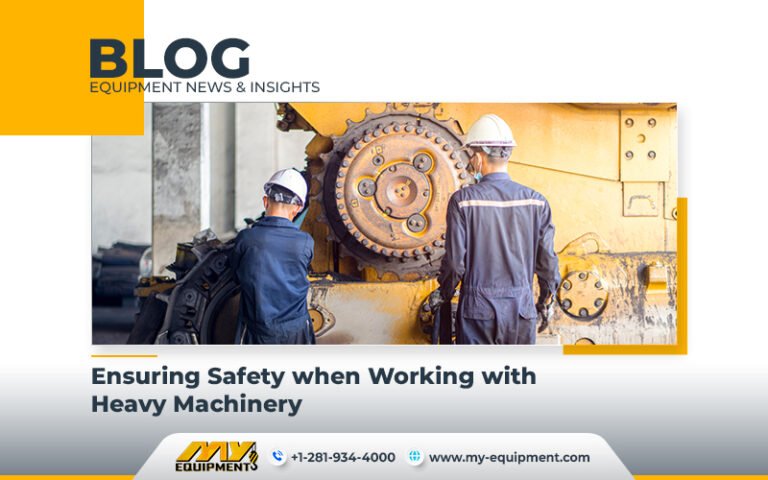Heavy mobile equipment used in construction poses a significant risk to workers, pedestrians and equipment operators. Accidents involving heavy equipment, such as rollovers or collisions, are actually one of the leading causes of injuries and fatalities on construction sites. Today we will review the importance of safety measures and provide guidelines for contractors and workers to mitigate the risks associated with heavy machinery.
Common causes of injury and death
Falling of materials and loads
Accidents can occur when materials or loads fall from equipment, endangering all nearby workers. The correct handling and safety of materials is quite necessary if you want to avoid this type of incidents.
Blind spots for equipment operators
Heavy equipment operators they often have very limited visibility, resulting in blind spots. This can lead to accidents with pedestrians or ground workers that are not even visible to the operator. Awareness of blind spots and effective communication between operators and workers is also very important.
Improper operation and maintenance of the vehicle
Incidents can arise when operators dismount vehicles without activating safety mechanisms, fail to apply brakes, or neglect proper maintenance and lockout/tagout procedures. These problems can even cause unwanted movement or malfunction of the vehicle.
Overturning or overturning of equipment
Poor stability, improper operation, or unfavorable ground conditions can cause things like tipping or overturning of equipment, posing a significant risk to operators and nearby workers.
Government controls and precautions
Implementing administrative controls and safety procedures can significantly reduce accidents and fatalities involving heavy machinery. Please note the following precautions to help improve safety.
Use qualified operators and observers
It is important to make sure that all the equipment operators and observers have received appropriate training and are qualified for their duties. It is very important to train employees in safe work techniques and raise awareness about the dangers of heavy machinery.
Provide instruction manuals and site plans
Give operators access to instruction manuals and create site plans that include designated areas for vehicle and equipment movement, reducing the likelihood of accidents and backups.
Establish restricted areas and rollover protection
Designate restricted access areas and implement rollover protective structures (ROPS) on equipment to improve operator safety.
Maintain equipment and use lockout/tagout procedures
Inspect and maintain equipment periodically to ensure it is in good working order. Implement lockout/tagout procedures before servicing any equipment to prevent unintended activation or release of stored energy.
Safe work practices for operators
Operators play a key role in reducing the risk of accidents associated with heavy machinery. By following safe practices and familiarizing themselves with the equipment they operate, operators can make the site safer.
Team knowledge and daily reviews
Operators must be knowledgeable about the equipment and perform daily checks, including inspection of the brake system, lights, warning systems and mirrors to ensure optimal functionality.
Avoid dangers
Operators must know that employees are clear of machinery before beginning operations. When entering or exiting the team, maintain three points of contact and face the team. Always wear your seat belt and refrain from overloading vehicles.
Superior cargo security
For top-loading vehicles, you should use cab shields or canopy protection to protect yourself from falling objects or materials.
Safety procedures and awareness of ground workers
Ground staff also play a very important role in reducing the risks associated with heavy machinery. Implementing safety procedures and promoting awareness among ground workers are essential.
Highly visible clothes and avoiding blind spots
Ground workers should wear highly visible clothing when working near heavy equipment and avoid riding on moving equipment or standing in any blind spots.
Placement of the work area
Workers should also avoid working near heavy machinery, especially in blind spots. Make eye contact with equipment operators before approaching a vehicle and make sure they can see you.
Safe travels and suspended loads
Workers should also wear seat belts and only travel in designated seating areas.
Views:
0

